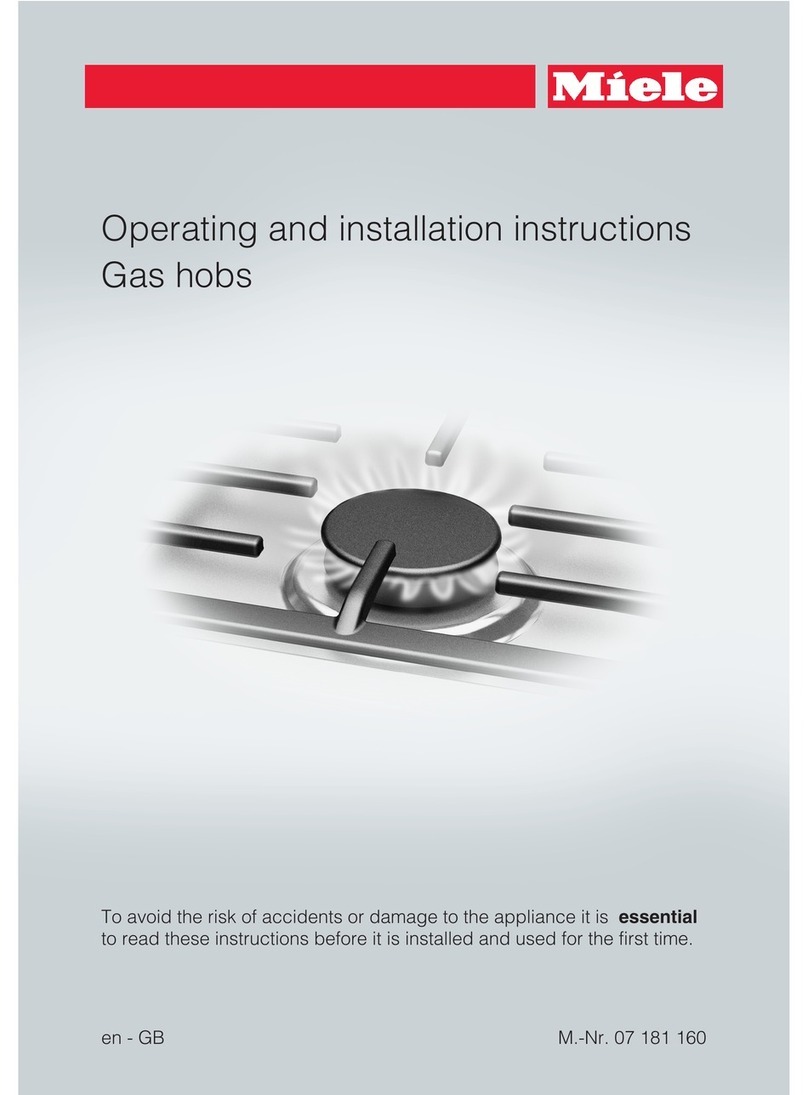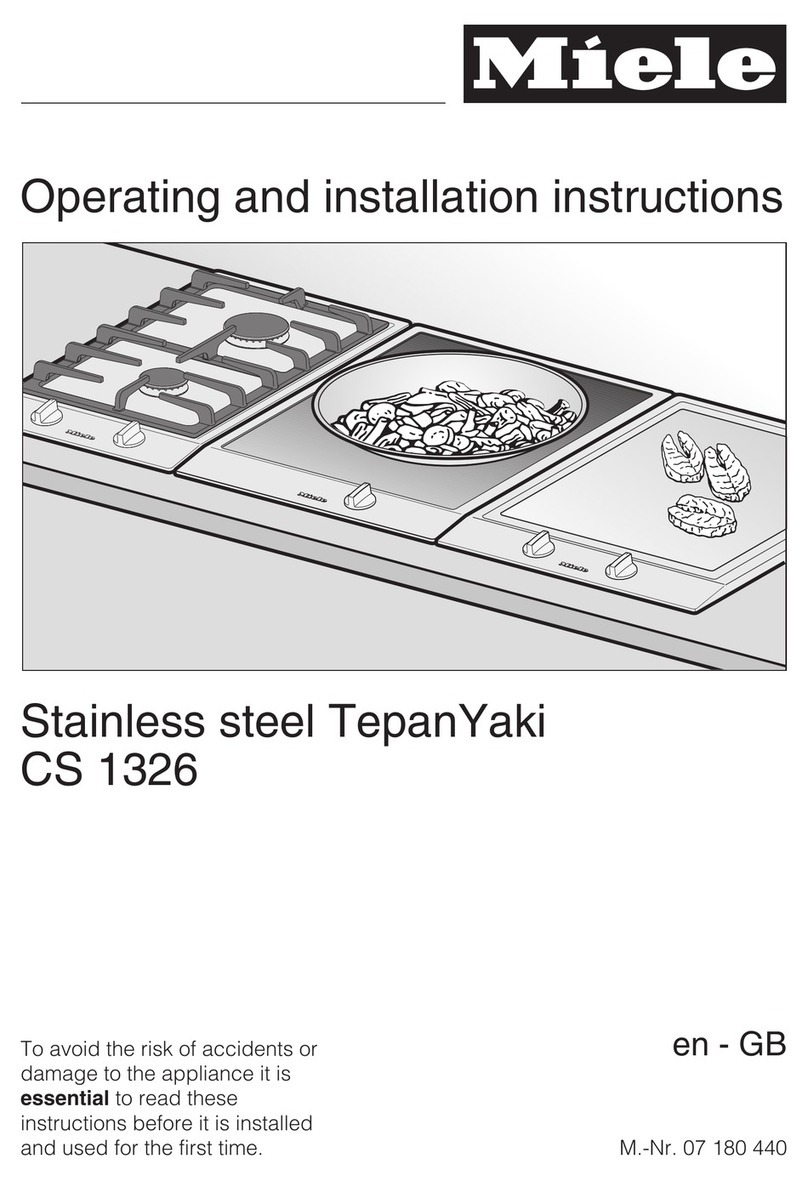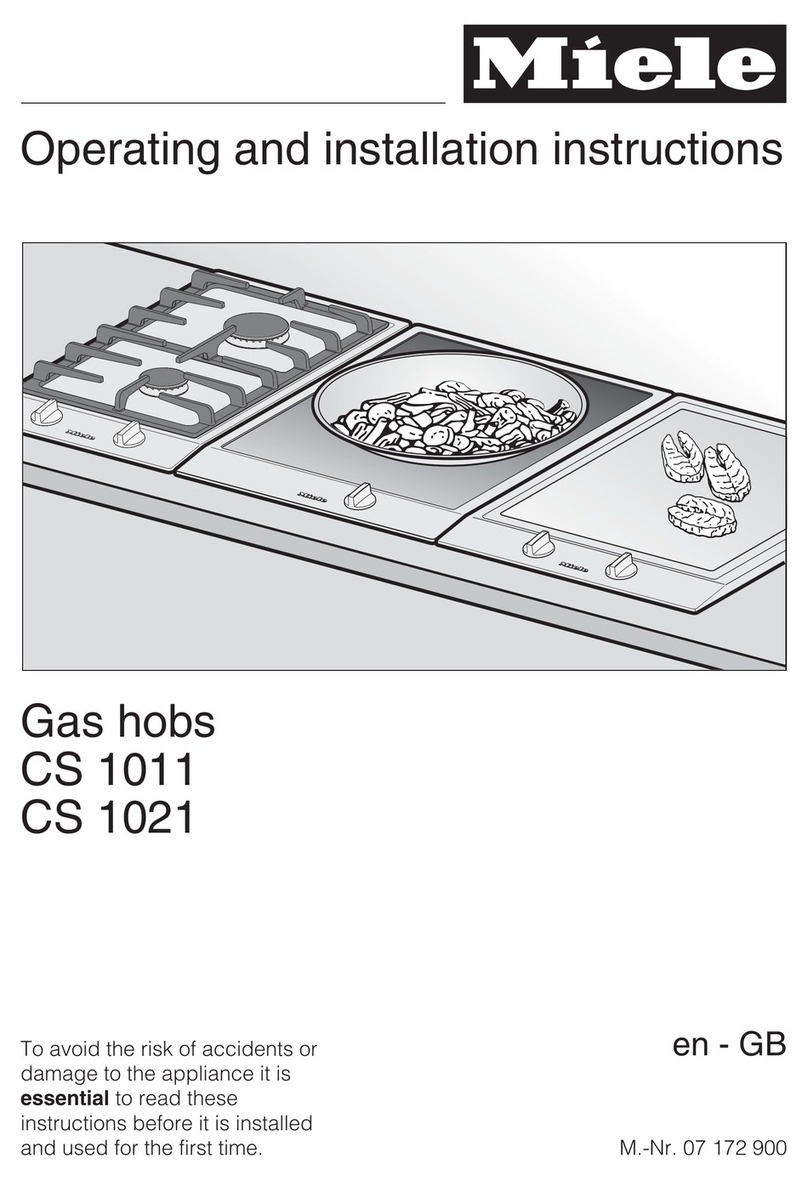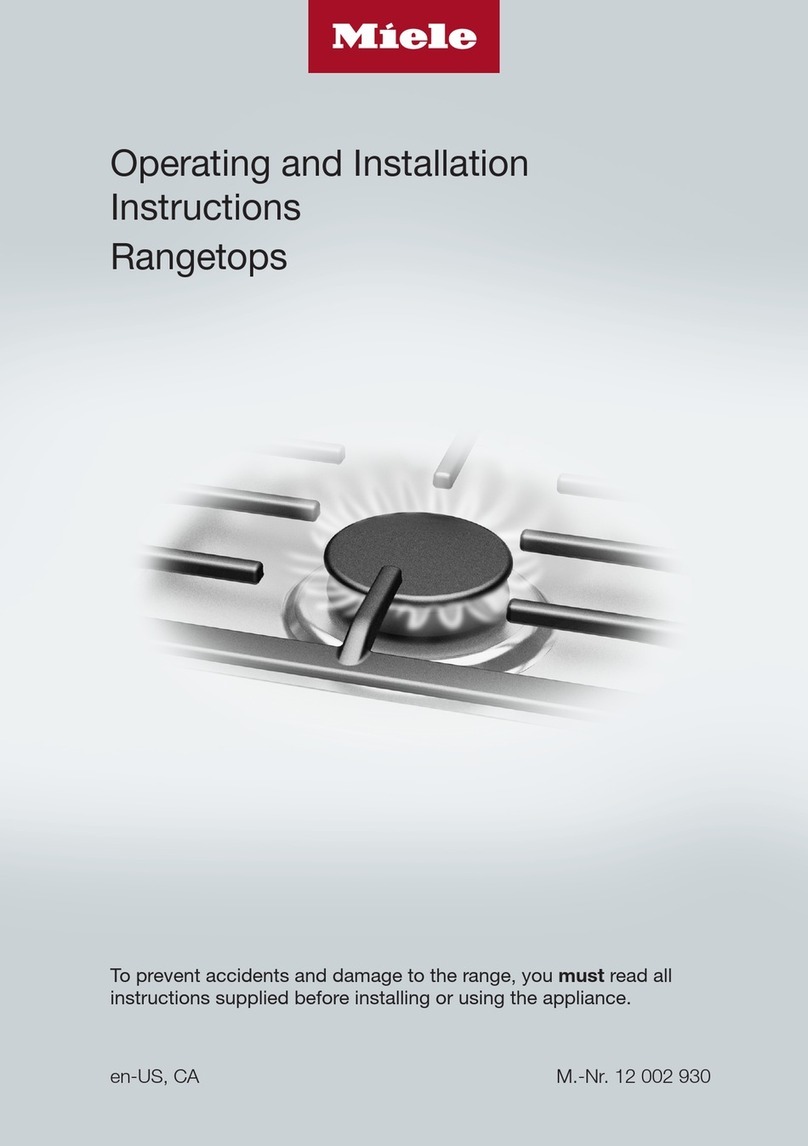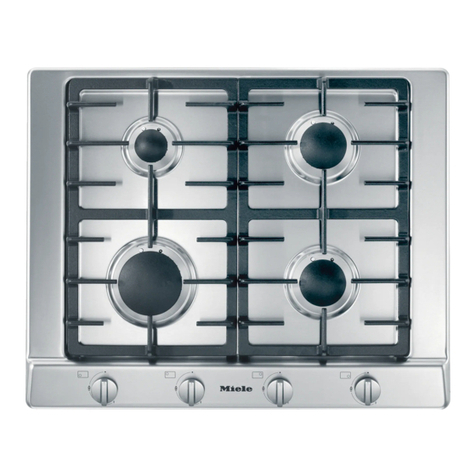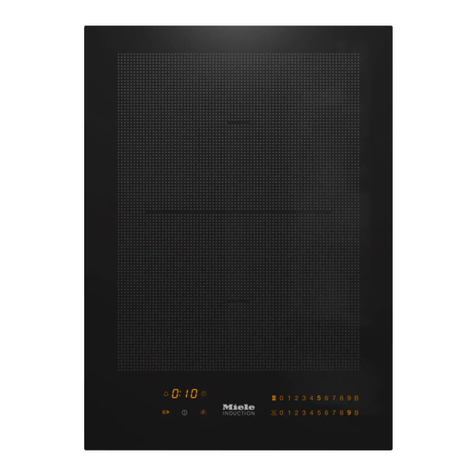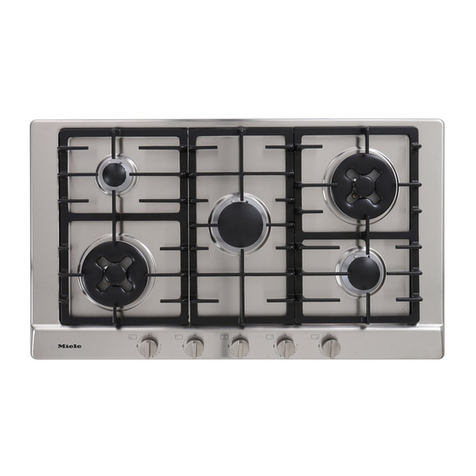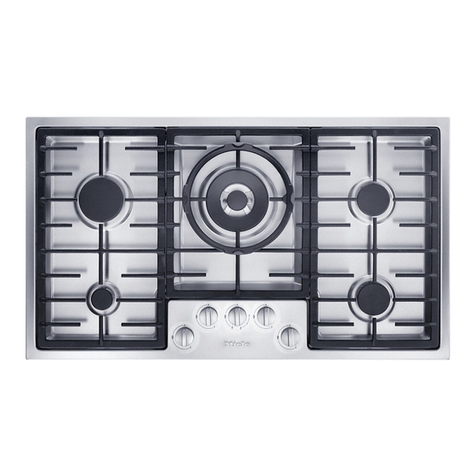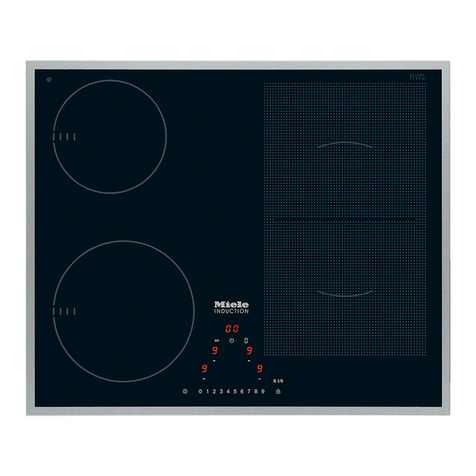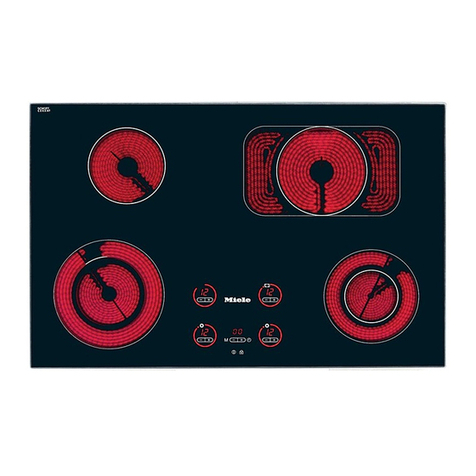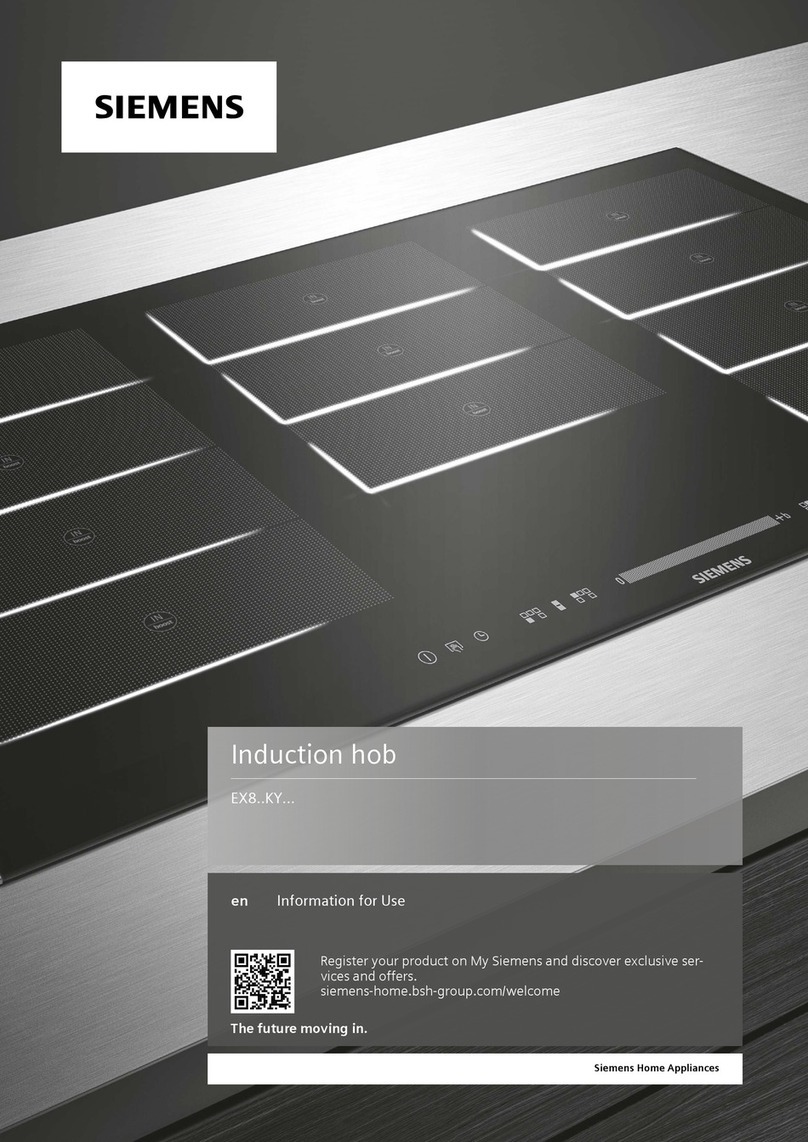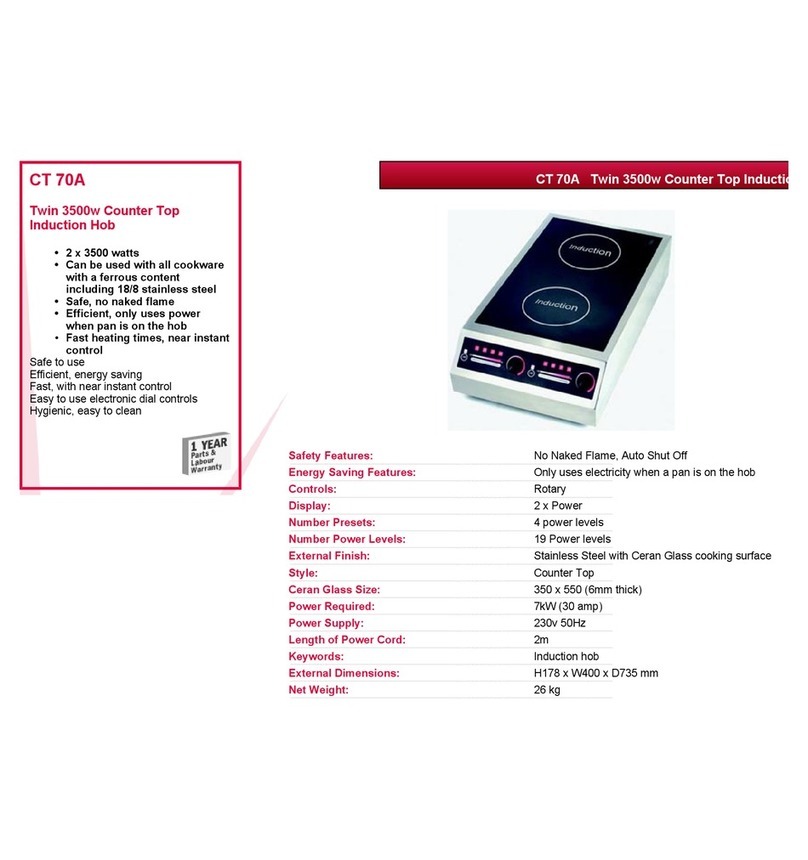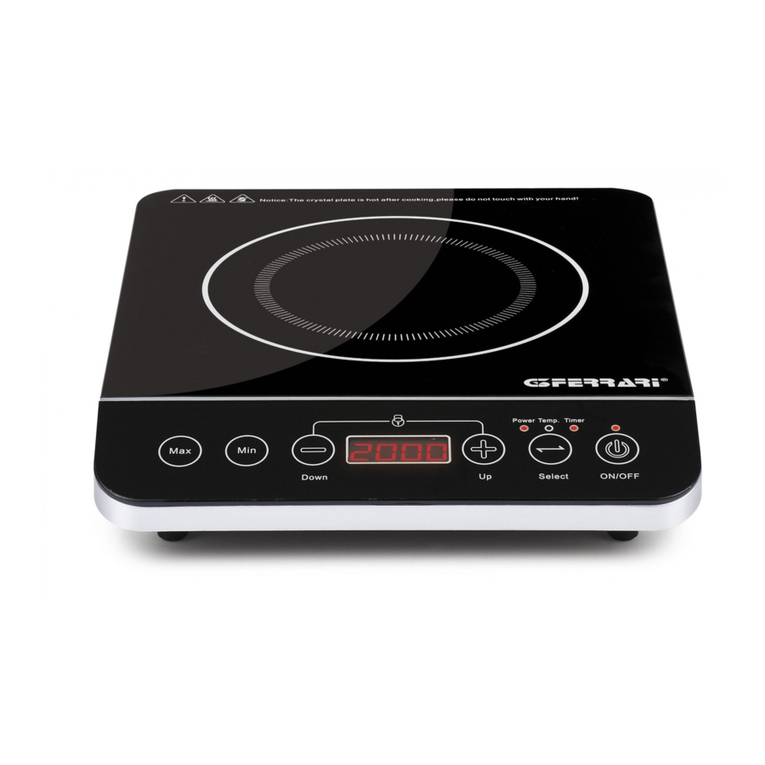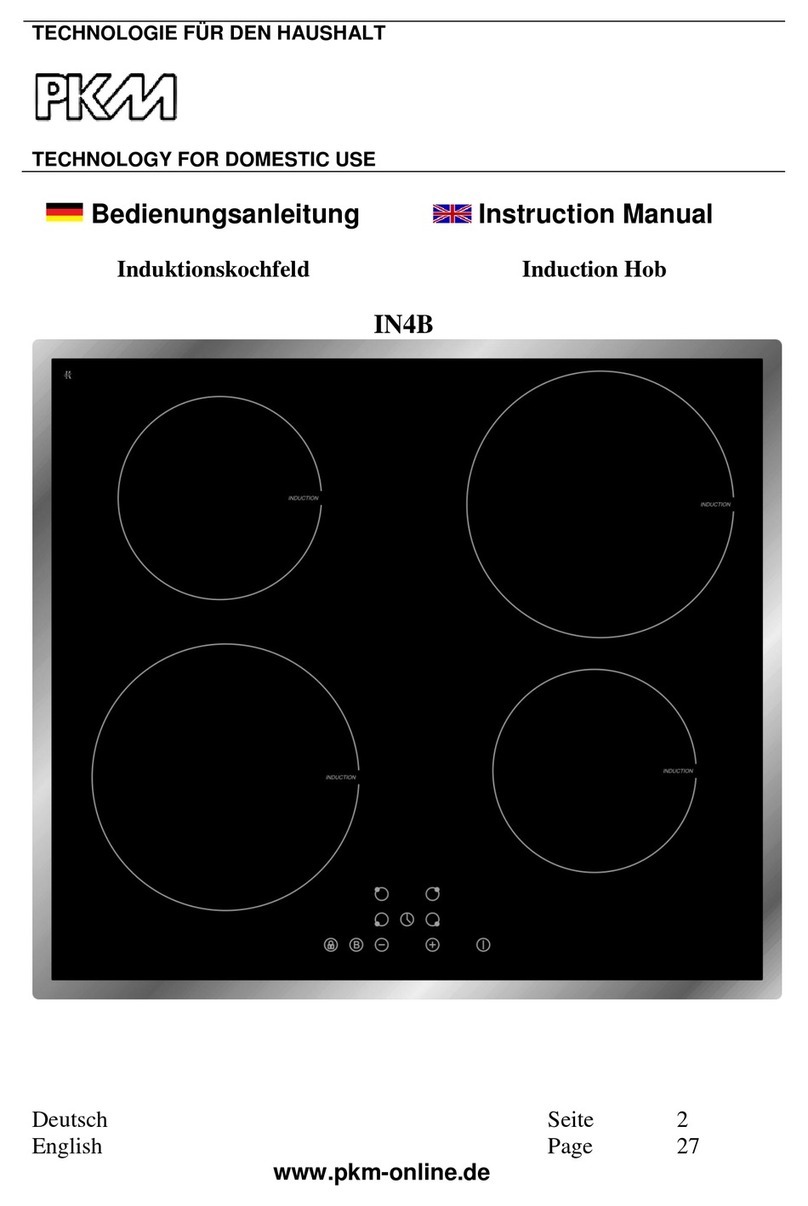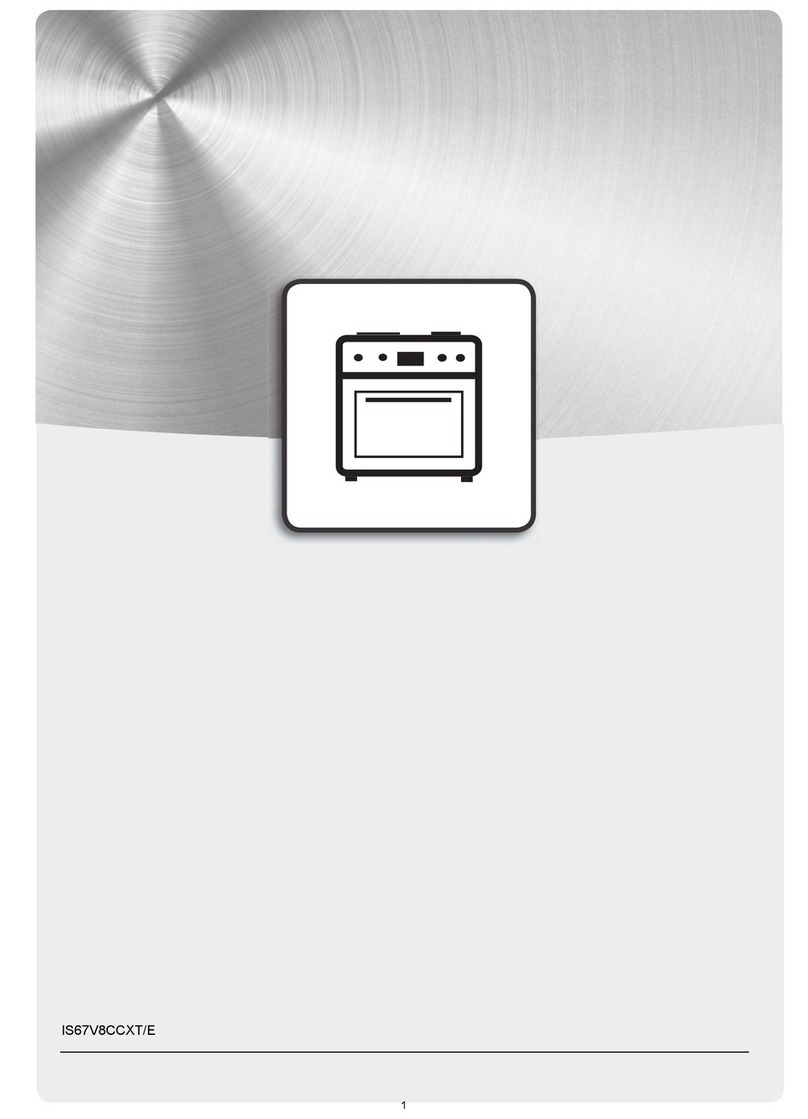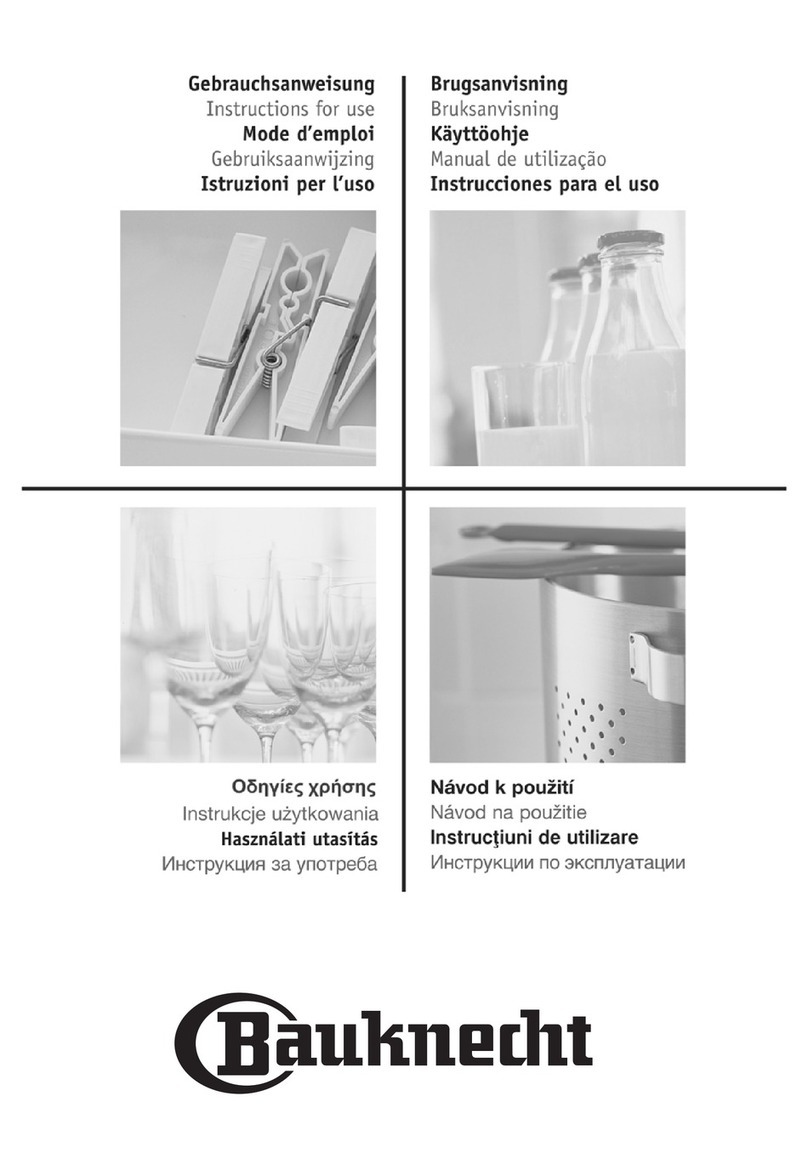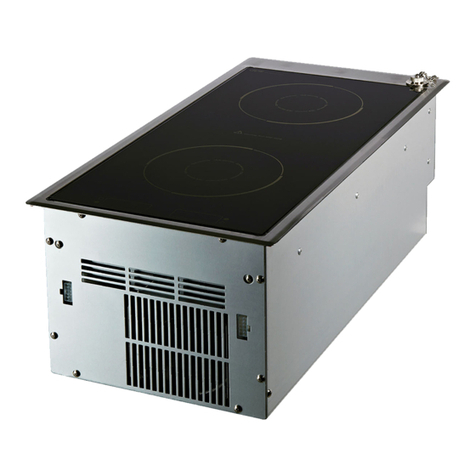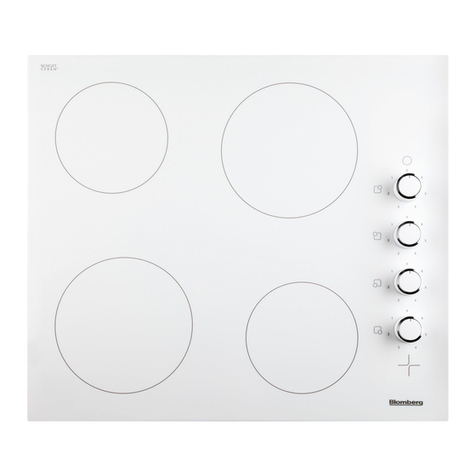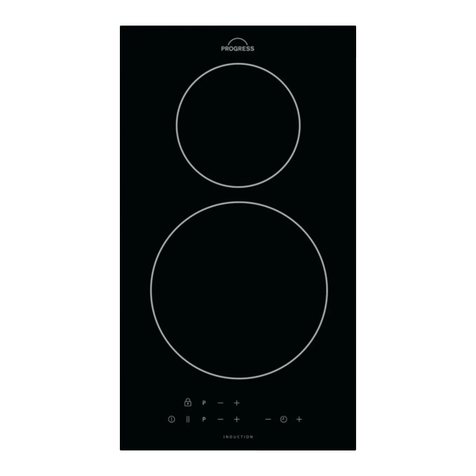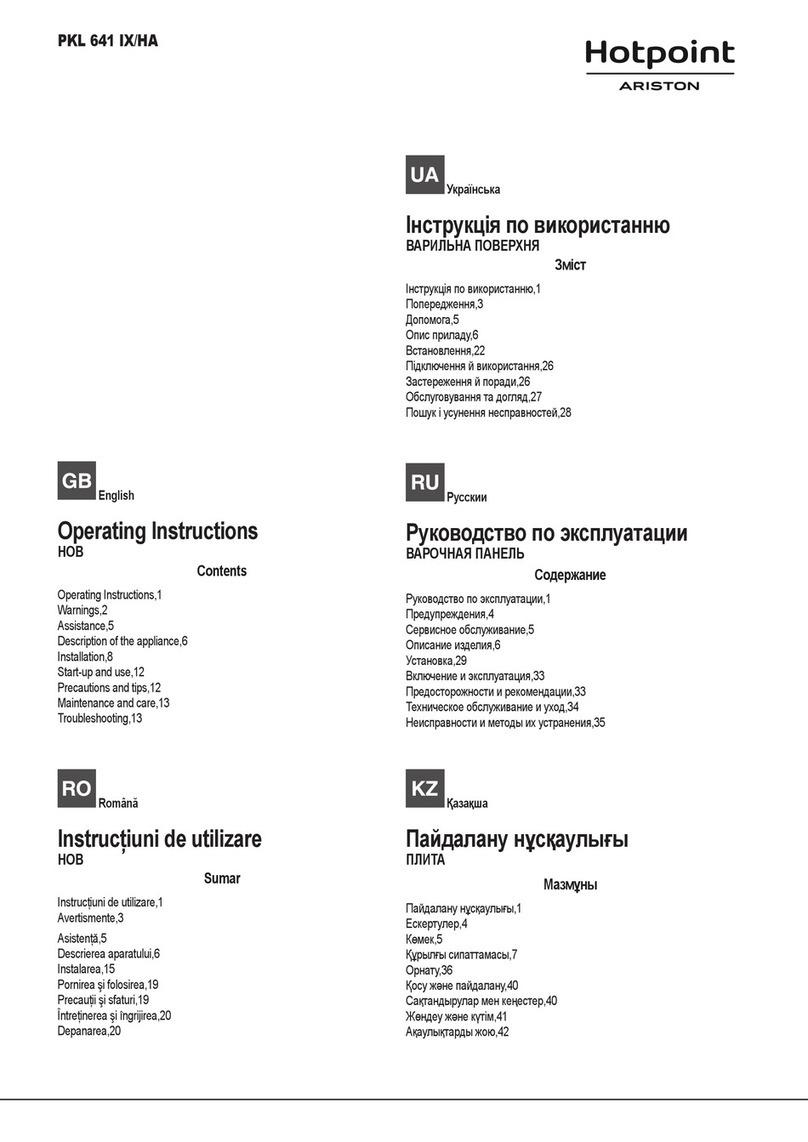Installation and connection
The appliance must be installed
and connected by a suitably
qualified and competent person in strict
accordance with local and national
safety regulations. The manufacturer
cannot be held liable for damage
caused by incorrect installation or
connection.
The electrical safety of this
appliance can only be guaranteed
when continuity is complete between
the appliance and an effective earthing
system, which complies with local and
national safety regulations. It is most
important that this basic safety
requirement is regularly tested, and if
there is any doubt, the electrical wiring
in the home should be inspected by a
qualified electrician. The manufacturer
cannot be held liable for the
consequences of an inadequate
earthing system (e.g. electric shock).
Do not connect the appliance to
the mains electricity supply by an
extension lead. Extension leads do not
guarantee the required safety of the
appliance (e.g. danger of overheating).
This appliance must not be
installed over a dishwasher,
washing machine, tumble dryer,
refrigerator, freezer or fridge-freezer.
The high temperatures radiated by it
could damage the appliance below.
This could also impair the hob's
ventilation system.
This equipment may only be used
in mobile installations such as
ships, caravans, aircraft etc. if a risk
assessment of the installation has been
carried out by a suitably qualified
engineer.
On hobs with bevelled glass edges
a small gap may be visible
between the hob and the worktop
during the first few days after
installation. This gap will reduce with
time as the appliance is used and will
not affect the electrical safety of your
appliance.
Warning and Safety instructions
8

